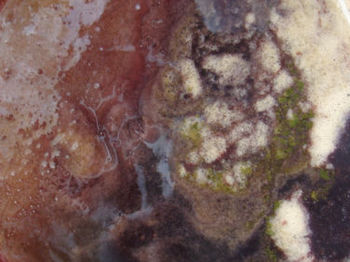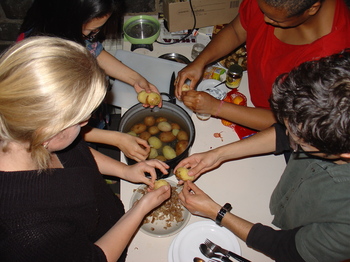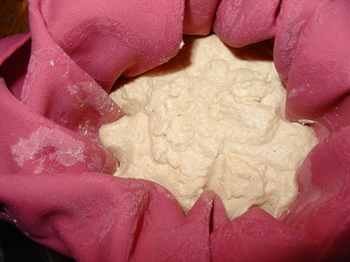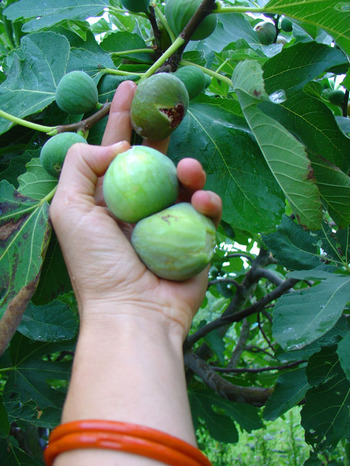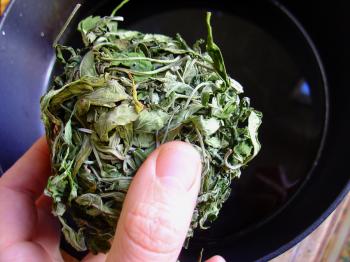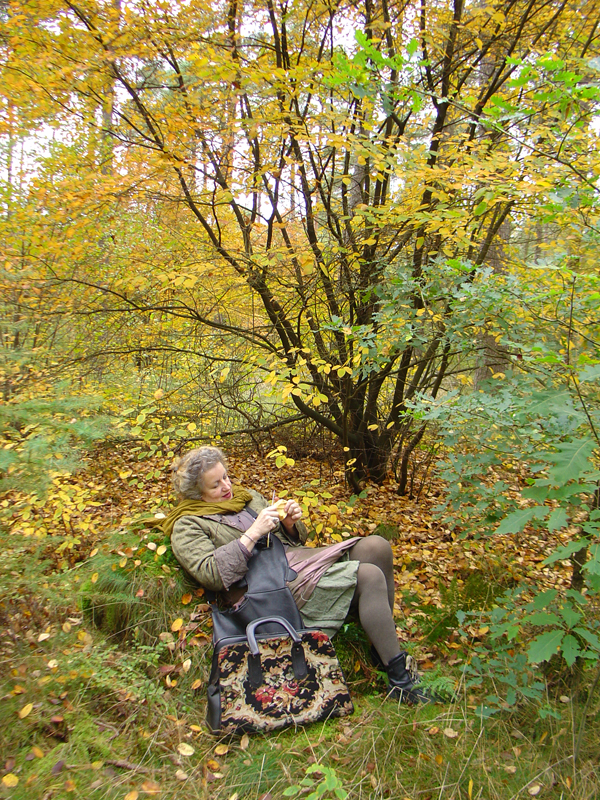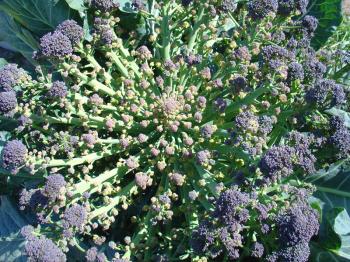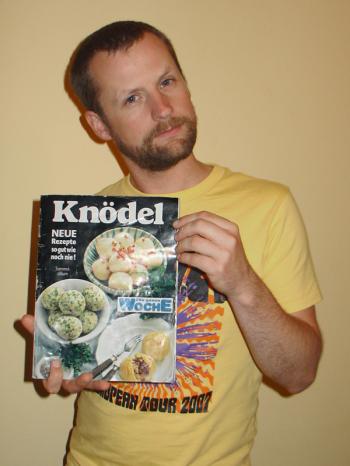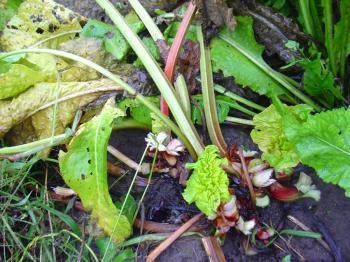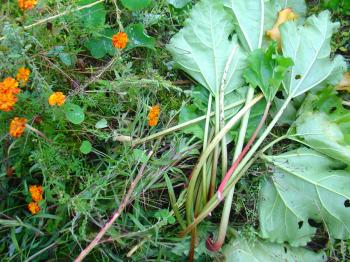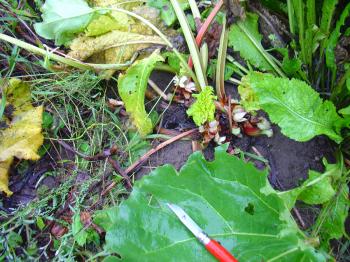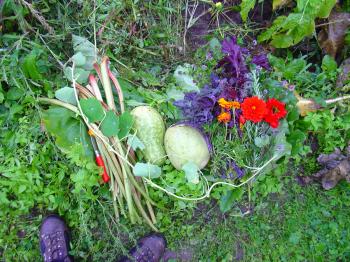Subjective Atlas of Palestine
and also of food
January 13, 2008
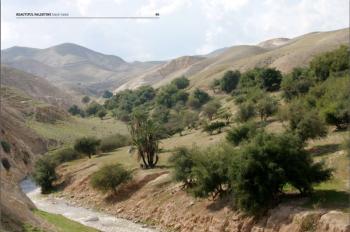
Just another beautiful picture of Palestine by Majdi Hadid, used entirely without permission
Say ‘Palestine’ and the first thing that pops into your head probably isn’t an image of undulating hills speckled with date palm oases and creased with a babbling brook, or an image of lush olive orchards crowded with red poppies.
Say ‘atlas’ and you probably don’t think of recipes for chickpeas or herbaria whose wild flowers include tulips, capers, saffron and cashews.
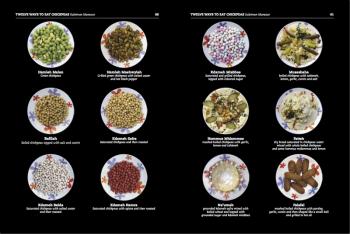
Chickpea typologies by Suleiman Mansour, used entirely without permission
It is an understatement to say that Palestine suffers from a lack of positive media representation. Even on Culiblog, the only entry about Palestine until now is a review of artist Khalil Rabah’s installation (the Palestinian Museum of Natural History and Humankind/Palestine before Palestine) and Osama Qashoo’s film, My Dear Olive Tree. Both works are supposedly about the culinary and cultural heritage that is the olive tree, but they also show violent destruction of property and cultural appropriation. Neither work leaves one with a positive sense of the country. This is what Annelys de Vet hopes to change through the Subjective Atlas of Palestine.
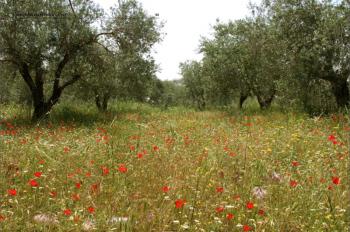
Just another beautiful picture of Palestine by Majdi Hadid, used entirely without permission
In a workshop held at the the International Academy of Art Palestine in Ramallah (April 2007), de Vet and thirty Palestinian artist/designers produced the materials for the atlas which consists of colourful spreads of Palestinian natural beauty, photo journals of daily life, herbaria that like all herbaria, make you want to go out and take a hike in the mountains to forage for herbs and berries and to search for that tiny little orchid. There are also revealing hand-drawn maps, overly-filled cultural agendas (mark your calendars with the Palestinian Mozart Festival) and an entire section on water pipes.
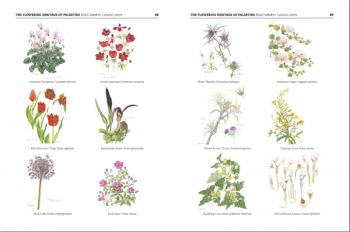
A Palestinian herbarium, used entirely without permission
Of course I appreciate the food-related sections, and these are many, because food always features prominently when people want to describe the sense of place that is their home. Suleiman Mansour’s ‘Twelve ways to eat chickpeas’ shows that hummous is in fact an inadequate term to describe what you can do with tahini, lemon and the noble bean. There is a flag made out of bread and a slice of watermelon as the national flag. In fact food is more present in the atlas than football, although that might just be a reflection of the authors’ preferences than anything else.
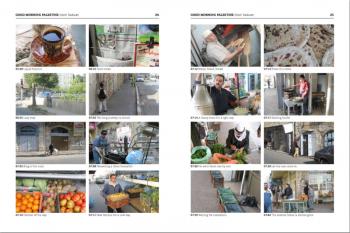
Good morning Palestine by Hosni Radwan, used entirely without permission
My favourite section is called Beautiful Palestine, nature photographs by Majdi Hadid that make you think of locations for romantic family picnics and walks in the hills, or of hot afternoons for olive harvesting. Reading the Subjective Atlas of Palestine, one feels it is about home, and certainly it is an hour’s perusal in which you will not think about war or occupation. More likely you’ll be triggered to remember lingering for a whiff of fresh sesame bread sold on the street, or of the social obligations associated with a cultural agenda filled with entirely too much Mozart. Palestine, it’s just as much alike and different from everywhere else, right? Could be that an admittedly subjective view is in fact the most accurate.
Maybe it’s the term ’subjective’ that allows me to feel comfortable with the fact that there could never be any other kind of atlas for Palestine. But then I do start thinking about the war and the occupation and how could it ever make sense for there to be an Objective Atlas of Anywhere? My thoughts turn to dipping dates into hummous and why there is not one single mention of a pomegranate in all this subjectivity. It’s such a hopeful fruit, the pomegranate.
debra at 20:37 | Comments (3) | post to del.icio.us
Harvesting rhubarb by candlelight
January 4, 2008
Of the BBC’s 100 unexpected facts that we didn’t know last year I’ve edited the list to include only the 13 food-related facts.
Apparently harvesting rhubarb by candlelight is a way to preserve even more rhubarb flavour. Because 2008 is a year for pumping up the volume, I have decided to make harvesting rhubarb by candlelight one of my 2008 New Years’ resolutions. I’m not getting any younger, and there is no time like the present to maximise the flavour potential of rhubarb. And in all seriousness, it is not unexpected that my food will taste better if I am connected to its harvest, by science or by ritual. Whatever works.
-
Here’s the list:
1. 3. Adding milk to tea negates the health-giving effects of a hot brew. More details
2. 5. Cloudy apple juice is healthier than clear, containing almost double the antioxidants which protect against heart disease and cancer. More details
3. 6. Dishcloths are purged of 99% of their bacteria during two minutes in a microwave. More details
4. 7. A haddock’s mating call starts as a slow knocking sound, before turning into a quicker hum similar to a small motorcycle revving its engine. More details
5. 10. Brazil nuts are seeds encased in an outer shell that weighs more than 1kg. More details
6. 17. Two cups of spearmint tea a day is thought to control excessive hair growth for women. More details
7. 26. Harvesting rhubarb in candlelight helps preserve its flavour. More details
8. 30. Serving anything more than tea and biscuits at a political meeting is an offence called “treating” and punishable by a year in prison or an unlimited fine, under the the Representation of the People Act 1893. More details
9. 37. Spiralling obesity rates are forcing councils to upgrade their crematoria, to take wider coffins. More details
10. 44. Europe has a vodka belt comprising Poland, Estonia, Latvia, Lithuania, Finland, Denmark and Sweden, although the drink is also made in countries such as Britain, France, Italy and Spain. More details
11. 46. Peanuts can be made into diamonds. More details
12. 75. CO2 emissions from shipping are twice the level of aviation. More details
13. 90. Chickens can be diagnosed with depression. More details
debra at 12:05 | Comments (2) | post to del.icio.us

